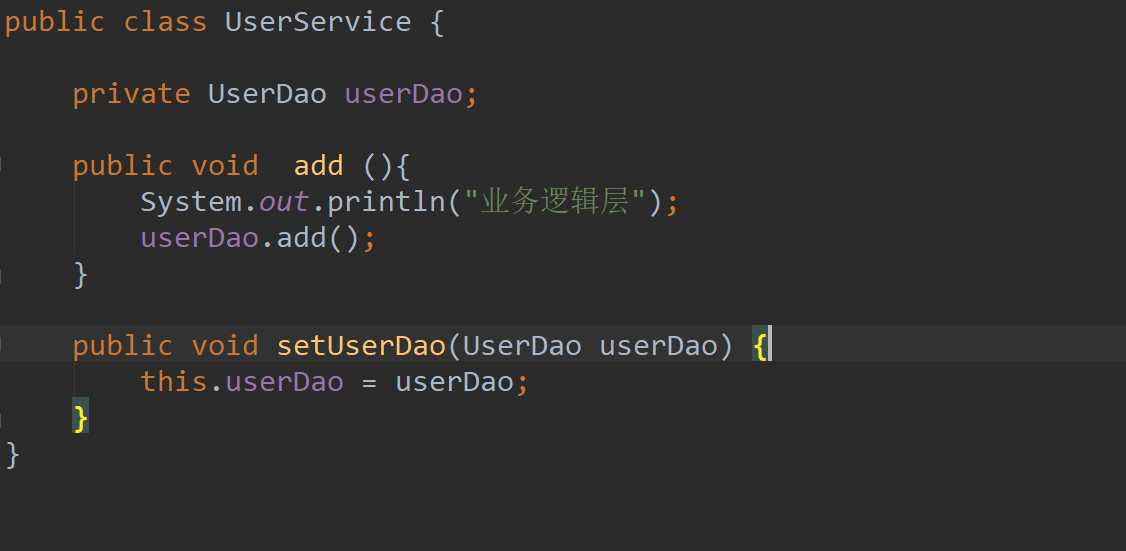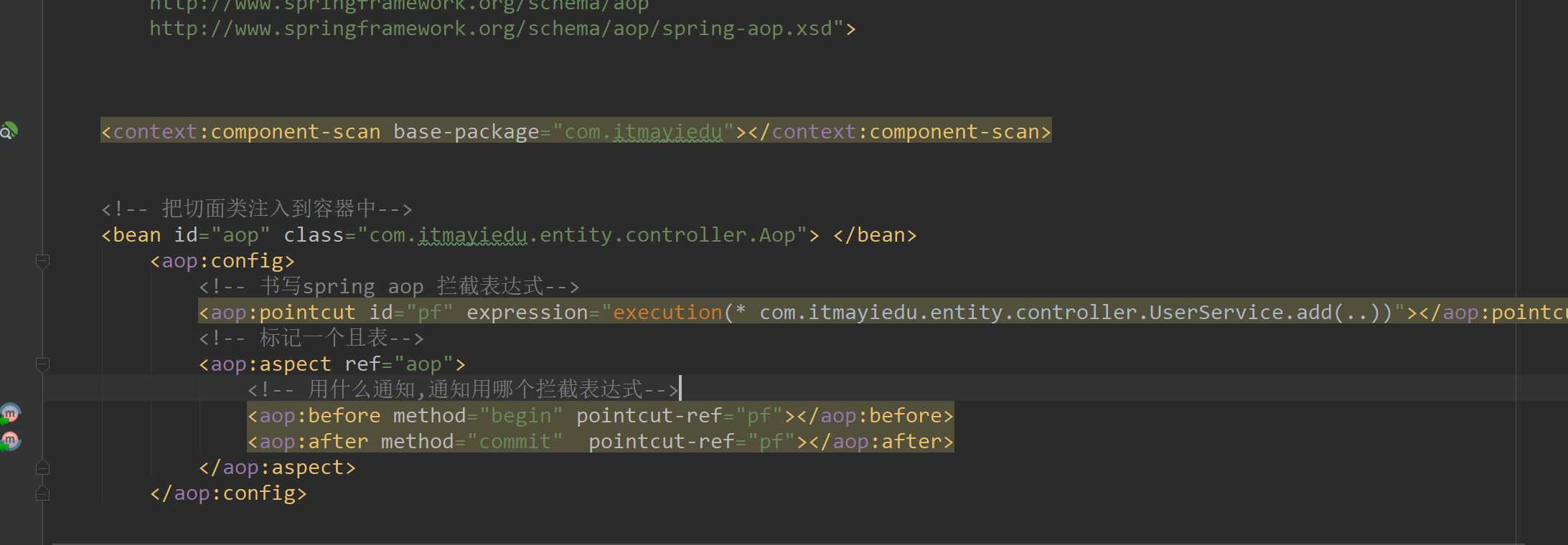Spring基础学习,没有理论 都是干货
2020-12-07 10:20
标签:err http private 有一个 构造 swing 理论 point 名称 构造函数 工厂创建对象 工厂类 静态工厂 工厂内 非静态工厂 想说一个根据构造函数来创建对象 无参函数刚刚已经说过那,这里主要说一下有参函数,在实体类中我们需要给给他声明一个有参函数 这里可以看到无参构造函数的优先于午参构造函数的 首先我们创建一个工厂类 注入的方式 通过构造函数(上面已经演示过) 通过set方法给对象赋值 p名称空间 自动装配 注解 在这里讲解set方法的注入 ### 曾经迪士尼面试官问过一道题,在spring中加入A依赖B 如何进行注入, 当时特别简单的一道题,结果想歪啦.说什么A的实体类有一个B对象进行new,接下来进行正解 这样的话,就完成了抵赖注入. 那么很多人很好奇问啦.为什么叫setter注入.没setter为什么就不行了.其实他底层用了反射setter方法修改属性办法,详情可以看我的过去的博客 https://www.cnblogs.com/itcastwzp/p/10971746.html P标签注入 这种方式恨简单.但是用的人很少,作为了解就好 如果想使用spring的注解,我们需要在xml中开启注解的权限并且扫描注的范围 @Respsitory 他的作用 类似 用于数据层 @Sevice 服务层 @Controller 控制层 作用类似 @Autowired类似 aop可以类似看重复的代码看成切面然后直接引用 首先xml开启aop 然后直接调用即可 这里难点和重点需要学习的是spring aop的表达式的写法 也就是这写aop执行在那些地方有效 具体参考https://www.cnblogs.com/imzhuo/p/5888007.html这位大佬的博客 首先取消@aspect注解 配置xml 运行结果 Spring基础学习,没有理论 都是干货 标签:err http private 有一个 构造 swing 理论 point 名称 原文地址:https://www.cnblogs.com/itcastwzp/p/10989649.html##学习需要掌握:反射和最简单的MVC架构流程
##对spring有过基础性的理论知识
##按照代码一步步来,30分钟掌握Spring的基本使用
1:先用spring创建一个最简单的对象
首先创建一个对象
package com.itmayiedu.entity;
public class UserEntity {
private String name;
private Integer age;
public String getName() {
return name;
}
public void setName(String name) {
this.name = name;
}
public Integer getAge() {
return age;
}
public void setAge(Integer age) {
this.age = age;
}
}
创建spring的xml文件
"1.0" encoding="UTF-8"?>
springioc创建对象的方式有哪些

package com.itmayiedu.entity;
import javax.swing.text.html.parser.Entity;
public class ObjectFactory {
public UserEntity getInstance(){
System.out.println();
return new UserEntity("wwww",23);
}
public static UserEntity getStaticInstance(){
System.out.println();
return new UserEntity("ggg",66);
}
}

接下来讲讲spring的注入




Spring注解

Spring的AOP
@Component
@Aspect
public class Aop {
/** 执行方法执行前**/
@Before("execution(* com.itmayiedu.entity.controller.UserService.add(..))")
public void begin(){
System.out.println("开启事务");
}
/**执行方法执行后**/
@After("execution(* com.itmayiedu.entity.controller.UserService.add(..))")
public void commit(){
System.out.println("事务提交");
}
/**执行方法抛异常**/
@AfterThrowing("execution(* com.itmayiedu.entity.controller.UserService.add(..))")
public void error(){
System.out.println("啊,我有异常啦");
}
/**方法运行结束后**/
@AfterReturning("execution(* com.itmayiedu.entity.controller.UserService.add(..))")
public void run(){
System.out.println("运行");
}
}
下面详解如何xml配置aop



上一篇:算法-插入排序